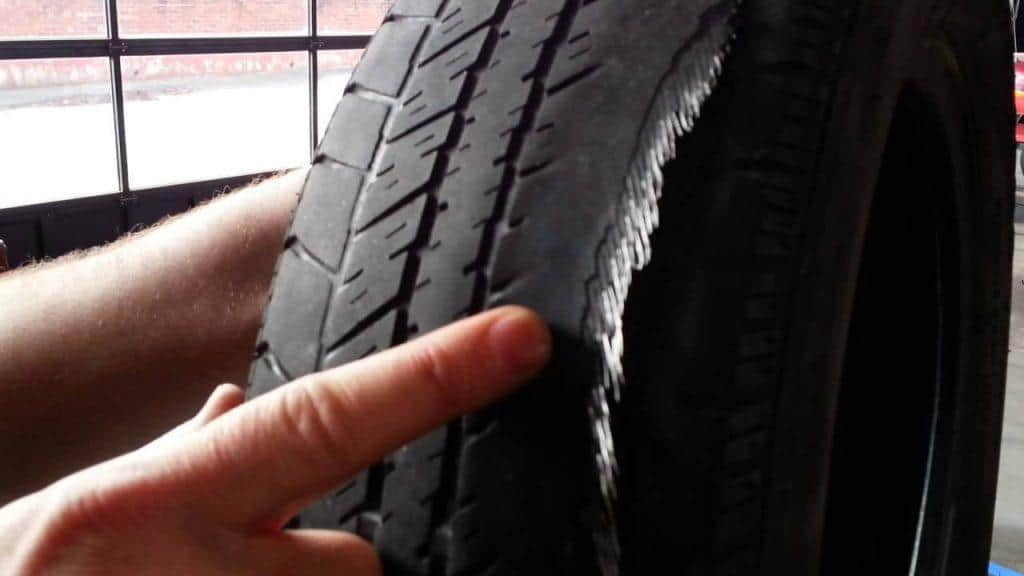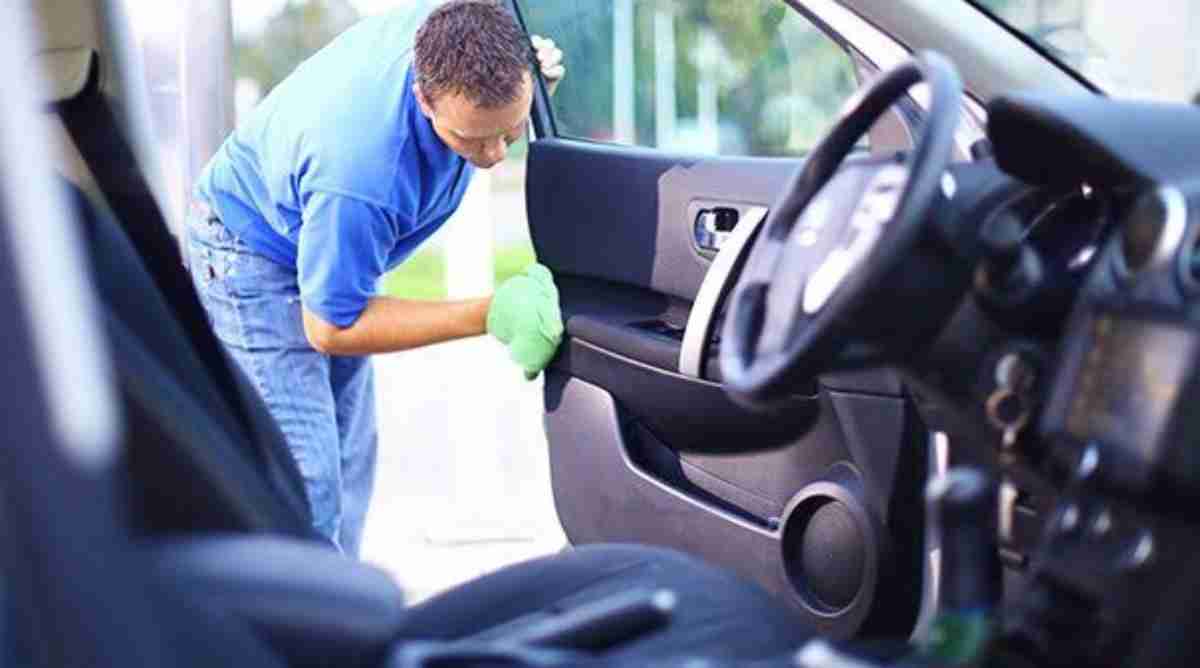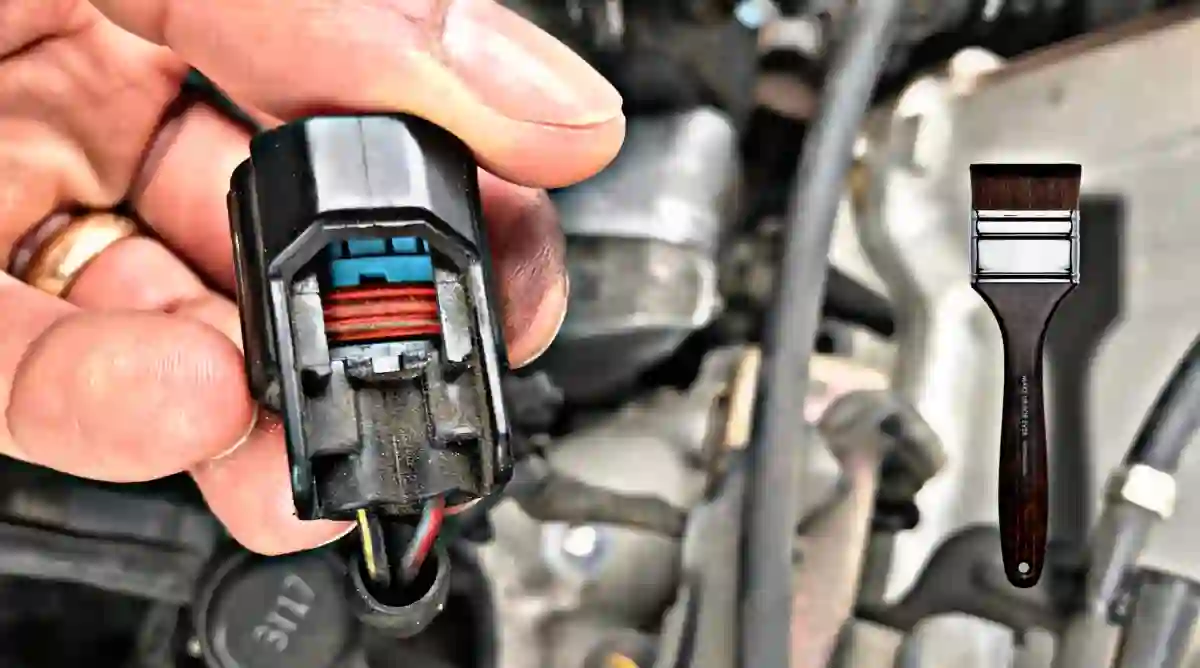No matter the quality of your tire, it will eventually start to wear out. But it becomes an anomaly when it seems to be wearing out more on the inside than on the outside. But what causes tires to wear on the inside abnormally?
Tires wear on the inside due to the non-functionality of the steering and suspension components. It results from incorrect toe settings, worn ball joints, tie rod ends, control arm bushing, and damaged springs that must be replaced before the alignment. A simple wheel alignment should stop the inside tire from tearing if the car is in good condition.
Ignoring tire wears is one risky thing to do as a driver. A car tire is a critical component of your daily commute, silently carrying you through all weather conditions and road hazards. This can compromise not only the performance of the tire but also impact the vehicle’s safety. So, what causes tires to wear on the inside?
In this article, we’ll explore the major causes of tires wearing on the inside and provide some helpful tips to prevent it from happening in the future. So, if you want to learn more about this common tire problem and how to avoid it, keep reading!
Reason Tires Wearing on the Inside?

Example of a Car Tire wearing from the inside.
One common problem that many drivers encounter is uneven tire wear, especially on the inside of the tire. Generally, tires wear on the inside depending on the usage level, and the primary reason is that the threads of the tires become thin.
Whether you’re a seasoned driver or a new one, understanding the causes of uneven tire wear can help you prolong the life of your tires and stay safe on the road
Read Also: What causes a tire to wear on the outside
What Causes Tires to Wear on the Inside?
- Camber Problem
- Worn Tie Rods
- Worn Ball Joints
- Worn Struts or Shock Absorbers
- Bad Wheel Alignment
- Improper Inflation Pressure
- Toe setting
1. Camber Problem
Dunn Tire confirms that the camber problem is one of the major factors that causes tires to wear on the inside. It occurs when the inside tread on the front tire wears out faster than the center or outside edge, affecting how straight up or down the car tire is located with the car’s full weight resting on it.
Camber angle allows car tires to sit flat on the road. However, if your wheels are out of alignment, it causes the camber angle to either be ‘positive’ or ‘negative.’
A negative camber angle allows the top of the tire to angle inwards, and the bottom of the tire is stationed further than its top, resulting in inner tire wear.
2. Worn Tie Rods
Tie rods is another leading factor that causes tires to wear on the inside
If you do not grease the tie rods regularly, it makes them wear out faster, affecting the front end of the alignment. So, ensure that you grease the tie rods, which should be done during each oil change tire.
3. Worn Ball Joints
Typically worn ball joints also causes tires to wear on the inside. Your vehicle’s ball joints connect to the tie rods to ensure the car steering remains in the right direction.
You can observe that your car’s ball joints are worn out when you hear sound from your suspension while climbing speed bumps or when the ball joints near the tire wear on the insides do not respond speedily to the steering.
4. Worn Struts or Shock Absorbers
Worn struts or shock absorbers can also causes tires to wear from the inside. In this regard, the vehicle wheels bounce excessively, especially on rough terrains, which results in the inner or outerwear pattern on the tread.
Moreover, it vibrates the steering wheel whenever you hit a speed bump.
5. Bad Wheel Alignment
Improper wheel alignment causes inner tire wear; your vehicle’s camber is typically out of proper alignment.
Your car may suffer bad alignment from pothole collisions, and the steering may pull in one direction while driving on a surface-level road.
6. Improper Inflation Pressure
Every manufacturer recommends a specific level of tire inflation. If you overinflate or underinflate tires, it causes wear on the inside.
Make sure to follow the manufacturer’s recommendation for enhanced tire life.
7. Toe Setting
If your vehicle toe settings are off, the front of your tires may point outward or inward, which causes excessive wear on the inside of your tires.
The reason is that more forces pull on the inside of your tires. However, if the toe alignment is properly done, your tires should be facing straightforwardly, not inward or outward, thereby reverting or not leading to the wear of the inner tire.
Ways to Fix Constant Inner Tire Wear
Below are the ways to fix inner tire wear:
- Wheel alignment
- The tire should be appropriately Inflated.
- Regular wheel balancing
- Fix or replace damaged suspension components
- Regular check on the tire tread depth
Wheel Alignment
Wheel alignment is a significant step to ensure the lasting life span of your tires. It is paramount that you get your wheels aligned to get rid of camber angle problems, worn ball joints, etc. that may damage the springs.
Always take your car for a wheel balancing and checkup after about 5000 miles or twice yearly.
Proper Tire Inflation
Underinflated or overinflated tires cause inner tire wear due to the inability of the sidewall to force the tires to contact the road properly.
Endeavour to check the tire pressures and inflate when regularly. If overinflated, deflate the tires to prevent faster wear from the inside.
Regular Wheel Balancing
100% of the mechanics report that the average vehicle owner brings their cars for toe inspection only after they observe wear on them. It is a terrific practice, and you risk buying new tires too often.
Make sure to keep in touch with the mechanic timely and run wheel balancing at least once every two years.
It is also advisable to take new tires for balancing after installations on your vehicle; it protects it from early wear.
Fix or Replace Damaged Suspension Components
Damaged suspension components on your car encourage faster wear on the inside of the tire. It can also slow down the vehicle speed, which burns more gas. Meanwhile, learn ways to improve mileage in a petrol car.
Note that leaving faulty suspension components unfixed results in irreparable repair.
Check Tire Tread Depth Regularly
Perform routine checks on tire tread depth regularly. New tires from the manufacturer have good tread depth, but as time goes on, the thread gets thinner. Make sure to check whether your tires are below the minimum tread depth.
Frequently Asked Questions About Inside Tire Wear
Will bad struts cause inside tire wear?
Bad struts cause inside tire wear. Struts are a crucial component of a vehicle’s suspension system and help absorb shocks and vibrations when driving on uneven surfaces. When struts are worn out or damaged, they may not be able to properly distribute the weight of the vehicle, causing the inside of the tire to wear more quickly than the outside.
In addition to inside tire wear, bad struts can cause other problems, such as poor handling, uneven tire wear, and a rough ride. If you notice any of these symptoms, it’s essential to have your vehicle inspected by a qualified mechanic as soon as possible to determine if the struts need to be replaced.
Why Do Rear Tires Wear on the Inside?
Rear tires can wear on the inside for multiple reasons, including misaligned wheels (too much toe-out) for a long time, camber angle problems, worn-out ball bearings and joints, and broken suspension components.
What Tire Wears Faster, Left or Right?
From observations, the front tires tend to wear faster than the rear tires, particularly the left front tire. The reason is that the front tires are responsible for heavier loads and steering transmissions during right-hand bends.
In essence, the front tire wears faster because of the excessive pressure on the tire.
When Should Tires be Replaced?
Tires that are ten years old should be replaced.
Tires tend to wear out over prolonged usage and should be replaced upon identifying damage.
Moreover, you can verify the tire’s age by examining the marks on the tire sidewall following the “DOT” symbol. If you buy a used tire, avoid tires older than ten years.
Conclusion
In conclusion, understanding what causes tires to wear on the inside can save you money and keep you safe on the road.
By regularly checking your tires and addressing any issues promptly, you can extend the life of your tires and ensure that your vehicle is performing at its best. Remember, tires are one of the most essential components of your vehicle, and taking care of them should be a top priority for any responsible driver. With a bit of attention and maintenance, you can enjoy a smooth, safe, and comfortable ride for many miles.


